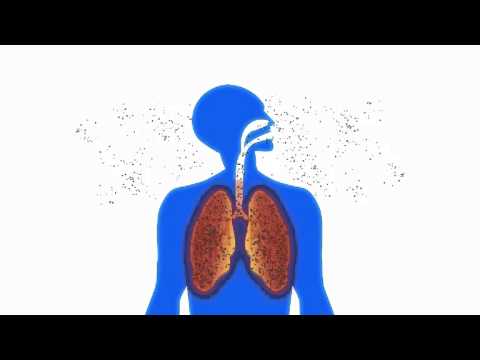Fracking Fall Out
Controversial spin-off industries expose gaps in regulation
Click Here for some media coverage about a dispute over the storage of fracking sand in Penhold, Alberta. Here is some more coverage of the same debate. The sand contains crystalline silica, which is known to cause deadly lung ailments including cancer. This Google Earth photo shows how close this facility is to people’s houses. It’s right across the street.
Silica sand has countless uses from golf courses to glass-making, so blaming fracking for this neighborhood uproar isn’t exactly fair. Or is it? Click here for a similar news story about chemical tank farms used to store fracking fluids. Here are photos of heavy trucks pounding country roads in the heartland of the US fracking debate. So there are “cumulative effects” of the primary industry, which happens to be unconventional energy development, and that tests the limits of conventional regulation. Back to sand:
Crystalline Silica is already regulated in the “workplace” or “occupational” health and safety context. The regime involves mandatory Material Safety Data Sheets (MSDS), warning signage, limits on occupational exposure and workers compensation claims. In fact “miner’s disease” has been recognized since Roman times. But when it comes to modern environmental health there is a gap where exposure to pollution is indirect, intermittent, or disproportionately felt by local people.
Consider the following:
- No “toxic substance”: Crystalline silica is not listed as “hazardous” or “toxic” under federal or provincial environmental legislation. It was sufficiently “high priority” to be screened for federal listing in 2013 but it did not meet the necessary criteria as was “not entering the environment in a sufficient quantity, concentration, or under conditions” that would create a health danger for “the general population in Canada”.
- No environmental permits: Sand storage operations on private land usually do not typically require federal or provincial permits. This is somewhat different from chemical tank farms which can be caught by provincial regulations if they are large enough. The provincial Environmental Protection and Enhancement Act (EPEA) can potentially require permits for activities that are not specifically designated, but that is not done in this case.
- Outside Air Quality standards: Crystalline silica isn’t directly targeted by federal or provincial air quality guidelines as these are focused on “particulate matter” more broadly. Also, the guidelines target particles under 2.5 microns which are small enough that they usually come from burning, not sand and dust. There is some monitoring of particles under 10 microns, which could catch dust, but this larger size is not used for regulatory compliance.
 Therefore the regulation of fracking sand depends on municipal bylaws and development permits, and on general legislative provisions for the storage of hazardous substances and prohibitions on “releases”. Any of these tools require enforcement that is subject to administrative discretion and political oversight. Individuals who suffer harm to health or property can initiate private law suits against polluters but that is a poor substitute for harm prevention and such cases are notoriously difficult to succeed at. We can ask operators to be good corporate citizens above and beyond their legal obligations, but that won’t work if the lack of “social license” applies to the whole industry and actually comes from lack of confidence in the regulatory system. Improving that system is going to require the recognition of indirect impacts and cumulative effects, and a leading case in Alberta like elsewhere is fracking.
Therefore the regulation of fracking sand depends on municipal bylaws and development permits, and on general legislative provisions for the storage of hazardous substances and prohibitions on “releases”. Any of these tools require enforcement that is subject to administrative discretion and political oversight. Individuals who suffer harm to health or property can initiate private law suits against polluters but that is a poor substitute for harm prevention and such cases are notoriously difficult to succeed at. We can ask operators to be good corporate citizens above and beyond their legal obligations, but that won’t work if the lack of “social license” applies to the whole industry and actually comes from lack of confidence in the regulatory system. Improving that system is going to require the recognition of indirect impacts and cumulative effects, and a leading case in Alberta like elsewhere is fracking.
ABOUT THE ENVIRONMENTAL LAW CENTRE:
The Environmental Law Centre (ELC) has been seeking strong and effective environmental laws since it was founded in 1982. The ELC is dedicated to providing credible, comprehensive and objective legal information regarding natural resources, energy and environmental law, policy and regulation in Alberta. The ELC’s mission is to educate and champion for strong laws and rights so all Albertans can enjoy clean water, clean air and a healthy environment. Our vision is a society where laws secure an environment that sustains current and future generations.
As a charity, the Environmental Law Centre depends on your financial support. Help us to continue to educate and champion for strong environmental laws, through tools such as our blog and all of our other resources, so that all Albertans can enjoy a healthy environment. Your support makes a difference.
Donate online today
